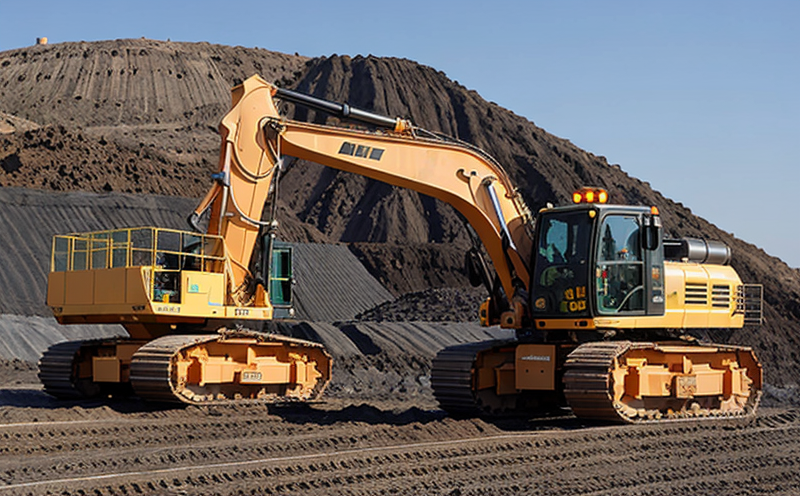SAE J1372 Rollover Protective Structure Performance Testing
The SAE J1372 standard is a crucial benchmark in the mining industry, particularly for equipment and machinery that can be exposed to hazardous environments. This testing ensures that rollover protective structures (ROPS) meet stringent safety requirements designed to protect operators from potential accidents during tipping or overturning events.
The primary objective of this test is to evaluate the structural integrity and performance of ROPS under simulated real-world conditions, ensuring they provide adequate protection in case of a tip-over situation. Compliance with SAE J1372 is not only essential for mining operations but also mandated by international safety regulations.
ROPS are critical components that protect operators from being crushed or otherwise injured during overturning incidents. The SAE J1372 test simulates the conditions under which an operator might be exposed to these risks, thereby providing a standardized method for assessing ROPS performance.
The testing process involves subjecting the ROPS to controlled forces that mimic the stresses experienced during a rollover event. This includes evaluating factors such as strength, durability, and flexibility of the structure under simulated tipping conditions. Compliance with SAE J1372 ensures that mining equipment meets rigorous safety standards, enhancing operator safety in challenging environments.
For quality managers and compliance officers, this testing is a vital tool for ensuring regulatory adherence and maintaining operational safety. R&D engineers benefit from the insights gained into material performance under extreme conditions, while procurement teams can use these results to source high-quality components.
Why It Matters
The SAE J1372 standard is essential for ensuring operator safety in mining environments. Mining equipment often operates under extreme conditions, with the potential for tipping or overturning events that could lead to serious injury or death if protective structures fail.
Compliance with this standard demonstrates a commitment to safety and regulatory compliance, which can enhance a company's reputation among stakeholders. It also helps in mitigating risks associated with equipment failures during operation. By adhering to SAE J1372, mining companies can ensure that their ROPS are robust enough to withstand the stresses of real-world incidents.
The standard is particularly important for operators working in environments where tipping and overturning events are a significant risk. It provides a clear framework for assessing ROPS performance, ensuring they meet the necessary safety criteria. This not only protects employees but also helps companies comply with international safety regulations, potentially reducing liability risks.
For quality managers and compliance officers, adherence to SAE J1372 is crucial for maintaining operational efficiency and safety. By ensuring that ROPS are up to standard, they can help prevent accidents and injuries, thereby enhancing overall productivity. For R&D engineers, this testing provides valuable data on material performance under extreme conditions, which can inform future design improvements.
Scope and Methodology
| Test Objective | Methodology |
|---|---|
| Evaluate the structural integrity of ROPS under simulated rollover conditions. | The test involves subjecting the ROPS to controlled forces that simulate tipping and overturning. This includes applying specific loads at defined angles and measuring deformation, strength, and durability. |
| Ensure compliance with international safety regulations. | The SAE J1372 test is designed to comply with international standards such as ISO 6882. It involves rigorous testing protocols that assess the ROPS' ability to protect operators during rollover incidents. |
The SAE J1372 standard requires specific test procedures to ensure accurate evaluation of ROPS performance. The methodology includes detailed steps for setting up and conducting tests, with a focus on replicating real-world conditions as closely as possible.
For mining equipment manufacturers, compliance with this standard is essential not only for meeting regulatory requirements but also for ensuring the safety and reliability of their products. It provides a standardized approach to testing that ensures consistency across different manufacturers and models.
Environmental and Sustainability Contributions
- Reduces the risk of operator injuries during tipping or overturning events.
- Supports regulatory compliance with international safety standards.
- Promotes safer working environments, enhancing overall operational efficiency.
- Helps in minimizing liability risks associated with equipment failures.
- Ensures the durability and longevity of ROPS, reducing the need for frequent replacements.





